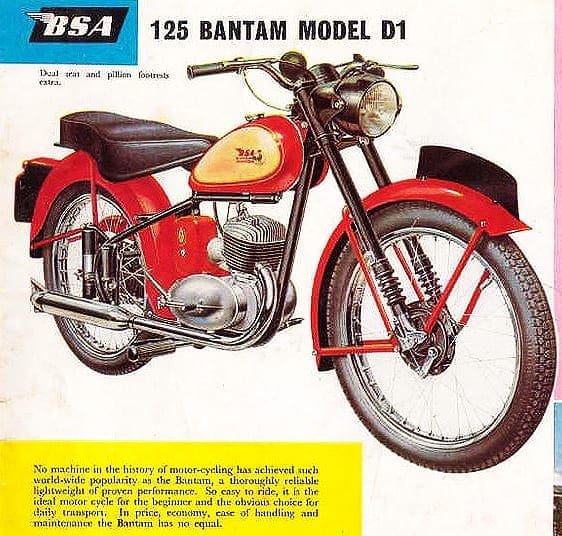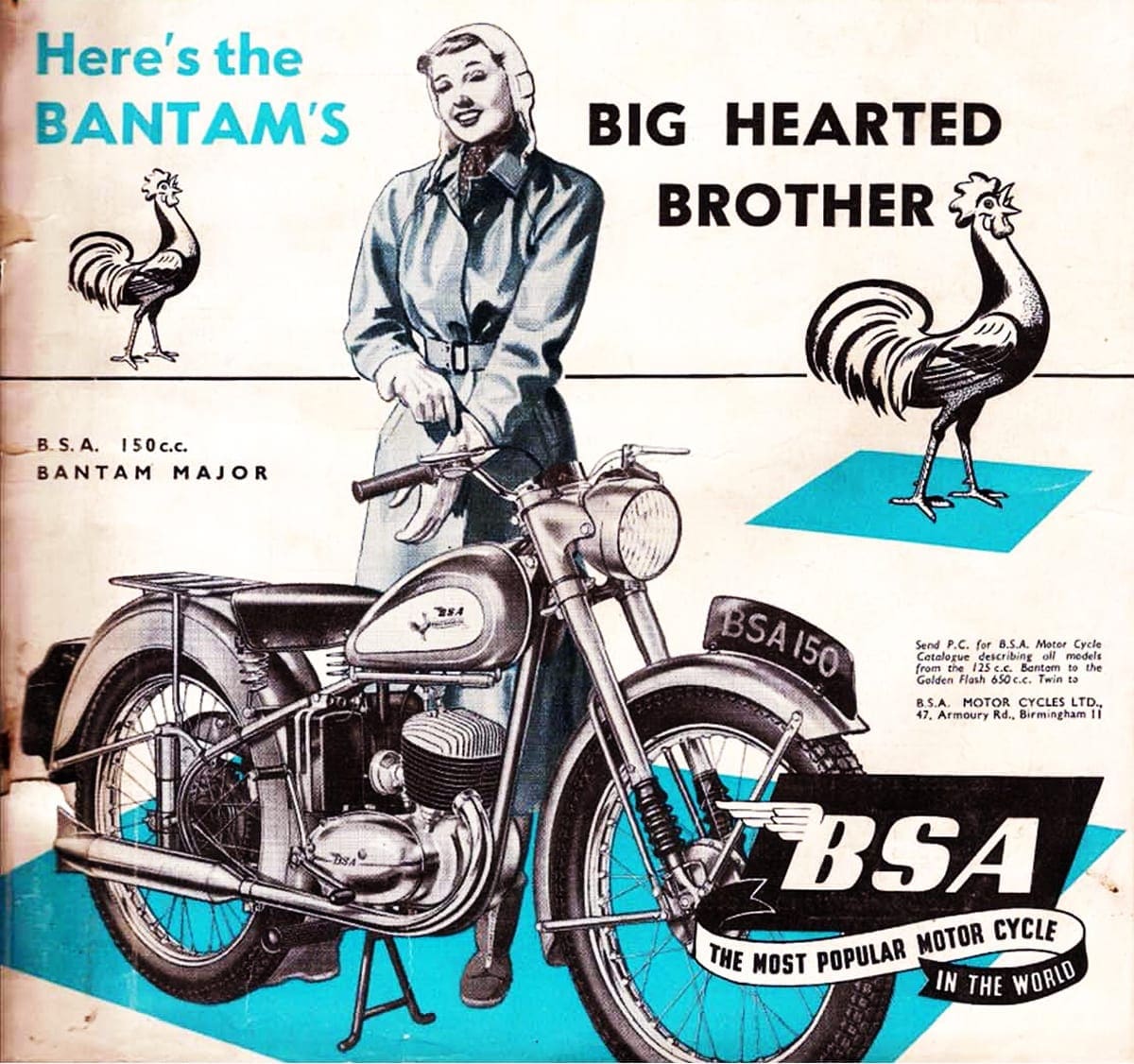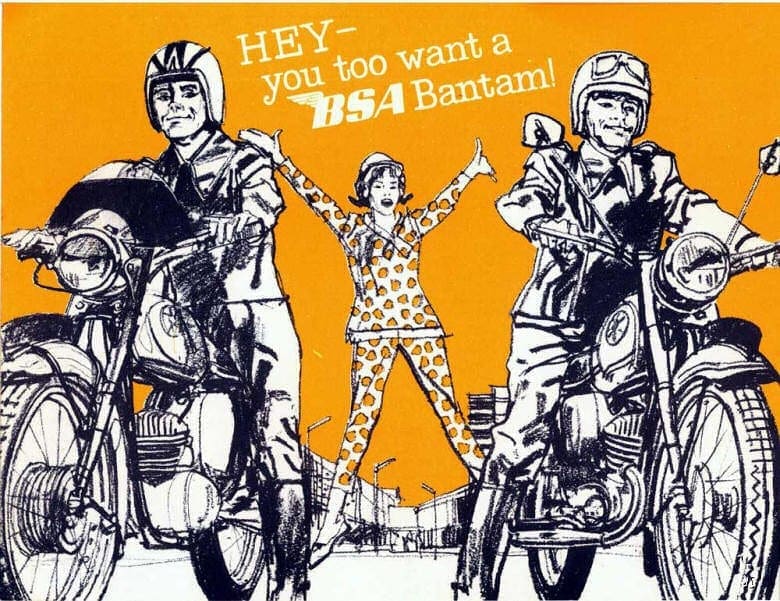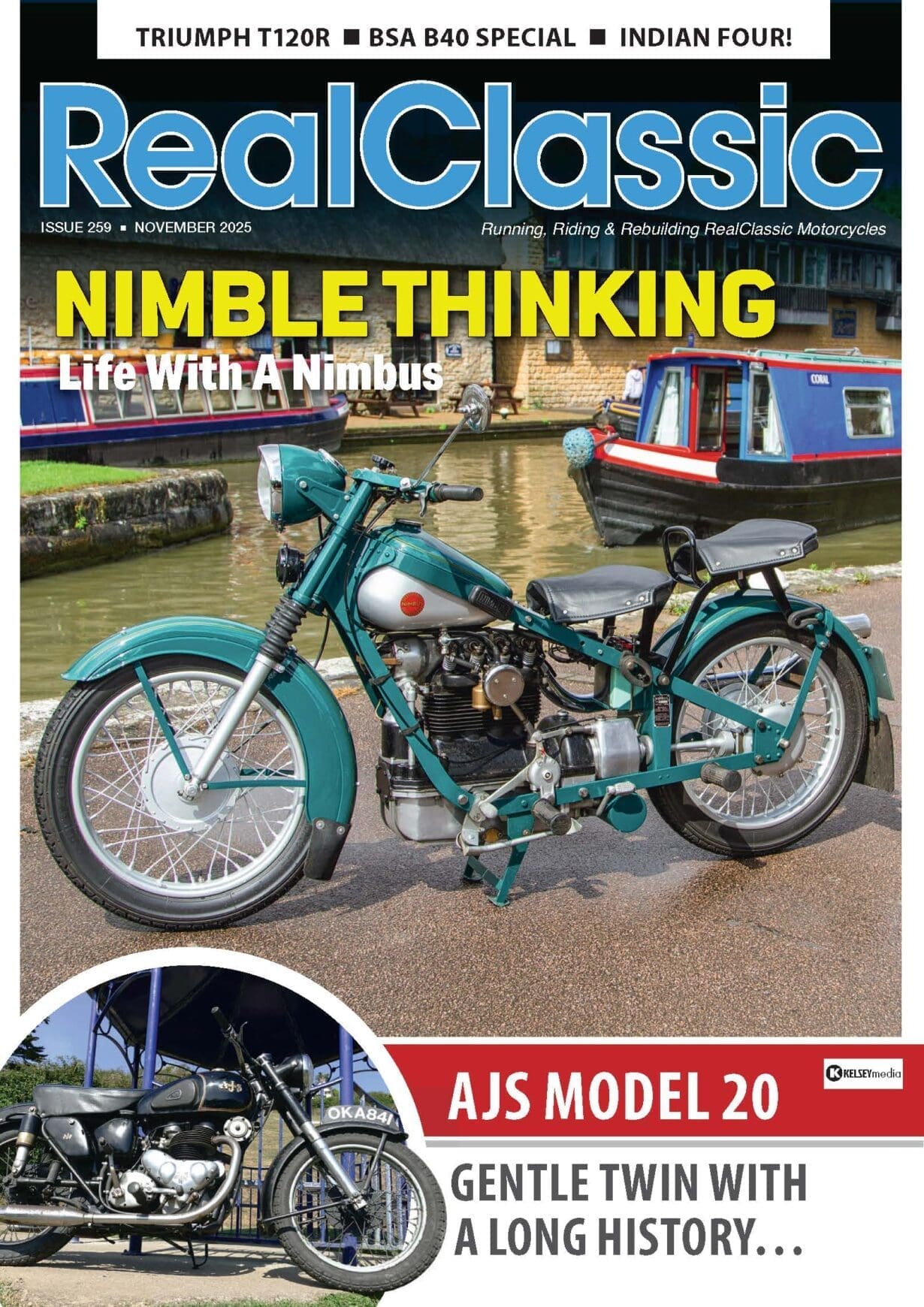Back in the 1960s, Doug Barton owned a couple of BSA’s sprightly lightweights, and vividly recalls his experiences with the trusty two-stroke…

At the time, I was the proud owner of a Harley Duoglide. There were not many Harleys around then, when Fred Warr was the only UK dealer. I needed a small bike for commuting from my home in Caterham to Croydon, where I worked. A friend on the south coast had two non-running early D1 Bantams for sale. One was fairly good, the other a wreck. We struck a deal and the princely sum of fifteen quid (including delivery) was handed over.
I made a good, running bike out of the two and can remember being so surprised at how smooth-running a single cylinder two-stroke could be. The Bantam was my first two-stroke. The D1 was made from 1948 through to 1963, starting out rigid and then getting plunger suspension. It was 123cc, unit construction with a three-speed gearbox and, initially, Wipac electrics. Top speed from the 4.5bhp engine was around 48mph.
Enjoy more RealClassic Magazine reading every month.
Click here to subscribe & save.
Next, a sad story. Winter came and I enrolled on an evening course at Croydon Technical College .One evening after classes, to my dismay, the Bantam had vanished from the car park. After searching all over with the caretaker I had to accept that the bike had been stolen. The time now was well after 10pm and the last bus to my home ten miles away had gone. No cell phones of course in those days, you were very much on your own. I managed to catch a bus that passed within five miles of home and had to walk the rest. By this time, nearly midnight, my mother was extremely worried!

The next spring I was lucky enough to buy another non-running Bantam from Lawson Motorcycles of South Norwood. This time it was a D3, the 150cc ‘Bantam Major’. This model started production in 1953 with plunger suspension, with a swinging arm version in 1956/57. In theory, a D3 was good for over 50mph with its 5.3bhp engine. Lawsons had taken it in part-exchange and just wanted it gone, so for a few pounds it was mine .Getting it home on the train was fun, with the station staff helping me lift it into the guards van. In due course, with the help of an auto-electrician friend, we sorted out the Wipac sparks and the bike was running fine.
The story would end here but for a comical incident when I gave a lift home to a ‘substantial’ friend. We were travelling home via the ‘country route’ and after several miles I wondered why the bike had lost all its power. I thought it must be the weight of my large passenger, slowing us down! The bike was struggling and a look in the mirror showed the road behind filled with smoke. I stopped and the smoke caught up with us, nearly choking us with the smell of burning rubber. It was obvious the rear tyre was rubbing on the underside of the mudguard. I always wondered why the bike had an oversized rear tyre – it had been no trouble… until now!
My large friend said, in no uncertain terms, that I couldn’t decant him in the middle of nowhere. So we completed the journey with me sitting on the tank and my hefty friend on the front of the dual seat, thereby relieving the rear of the bike of most of the weight. This ‘cosy’ situation worked although we got some strange looks from pedestrians! I can remember keeping that Bantam in second gear all the way, because I couldn’t reach the gear lever from my perch on the tank…
The moral of this story? Fat tyres and fat passengers don’t mix where Bantams are concerned!

———
Words by Doug Barton / Photos RC RChive
———
You’ll find more about BSA Bantams in the monthly magazine. The Sports version of the 175 D14 makes for a great first classic. Read all about it in RC160 – available mail order or to download as a digital issue!



